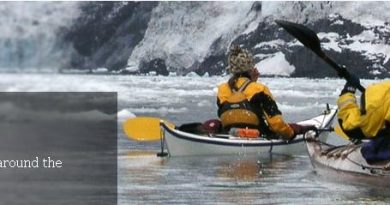US Puts Icebreaker Funding Into Brains, Not Brawn
After a forty year wait, the National Science Foundation, America’s foremost scientific research and funding organization, is beginning construction of a state-of-the-art, 254-foot oceanographic research vessel for the Arctic. The project, which is estimated to cost $199.5 million, was approved last December; construction is slated to begin in October, with the vessel ready for scientific duty by 2014. When complete, the R/V Sikuliaq will be able to break ice as thick as three feet, and navigate in seasonal sea ice and open ocean waters near Alaska, including the Chukchi, Beaufort and Bering Seas, as well as the eastern Arctic.
There are many great reasons to be excited about this project. The most obvious is the scientific one. As everyone knows, the Arctic is acting as the proverbial canary in the coal mine for the effects of global warming. Climate change and the anticipated increase in human use of the region will influence ocean circulation and ecosystem dynamics, impacting biological productivity, marine mammals and fish stocks. The Sikuliaq will help scientists better understand those effects.
But perhaps more interesting is what it says about American priorities. In recent years, the icebreaking capability of the U.S. Coast Guard has been allowed to atrophy. Of only three icebreakers, two – the Polar Star and the Polar Sea – have reached the end of their original commissions (built in 1976 and 1977 respectively, their intended service life was thirty years). Currently in dry dock in Seattle, the Polar Star is being given a $62 million refit in order to extend its service by seven to ten years, and is not expected to re-enter service until 2013. The Polar Sea received a $6.3 million refit in 2008 and $5.5 million in 2009, meant to extend its sea life by one season each. However unexpected engine troubles sidelined the vessel this June, and she will be out of service until at least next Winter. No new icebreakers have been commissioned by the USCG to replace its aging fleet. (The third icebreaker, the Healy, is a smaller vessel that was constructed mainly to conduct polar research. It is currently being used to map the geological seabed of the continental shelf off the coast of Alaska. It received its commission in August 2000.)
As shipping, industrial and tourist traffic increases in the Arctic, it will be necessary for the US to enhance its monitoring and enforcement capabilities in the Arctic, not to mention search and rescue. Anyone in favour of law, order and holding polluters accountable should be in favour of having well-functioning icebreakers operated by the circumpolar nations’ Coast Guards. But the fact that the big bucks – $200 million – are being allocated to brains rather than brawn in the US reinforces the point that climate change is seen as a bigger issue, and a bigger threat in the Arctic, than international conflict, terrorism or illegal fishing.
I think this assessment is spot on. And I applaud the funding of Arctic science. Good policy comes from good information; with its many environmental, cultural, political and economic issues, the Arctic is going to need a lot of good policy in the coming years.



